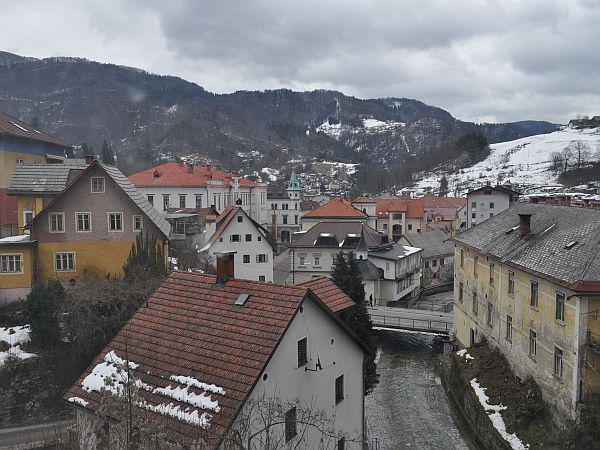But more than a century ago, Idrija was the terminus of a narrow-gauge railroad that was built in some of the most difficult conditions imaginable.

In 1916, World War I was in full swing and the Isonzo Front cut across what is now western Slovenia. The front was one of the major battlefields of the conflict, and the Austrians were desperately looking for a new way to bring much-needed supplies to the frontlines. Further up in the Alps, they built the Vršič Pass to ensure access to supplies, but they also decided to connect the strategic town of Idrija to their main rail network by building a narrow-gauge railroad.
The project involved a track from Idrija to the town of Logatec south of Ljubljana, where an existing railroad ran from Vienna to the port town of Trieste. The track was built in the most difficult wartime conditions and is still remembered as a remarkable feat of engineering. Some 30,000 prisoners of war, mostly Russians, worked in hellish conditions to build the track. The terrain was treacherous, as the railroad traversed steep hillsides and required the construction of several tunnels.
One of the key stretches, from Idrija to Godovič, was built in just under a month -- a remarkable undertaking even by today’s standards. In some places, the builders even laid the track on roads that had been constructed by French troops during Napoleon’s occupation of the Slovenian Lands in the early 19th century.
After several months of construction, the railroad was put into action. The trains were initially pulled by horses, but the animals were eventually replaced by modern locomotives. The Austrians finally had an efficient new supply route.
After a year of operation, the Isonzo Front shifted, and the railroad was abandoned. The tracks were dismantled, and in some places, a new road was built on the spot where the railroad once brought supplies to the frontlines. But in some wooded parts of western Slovenia, evidence of the old railroad remains hidden in the woods—a silent reminder when one of the major battlefields of the Great War cut across Slovenia.


































































